Long-term nitrate-nitrogen reductions in a large flood control reservoir
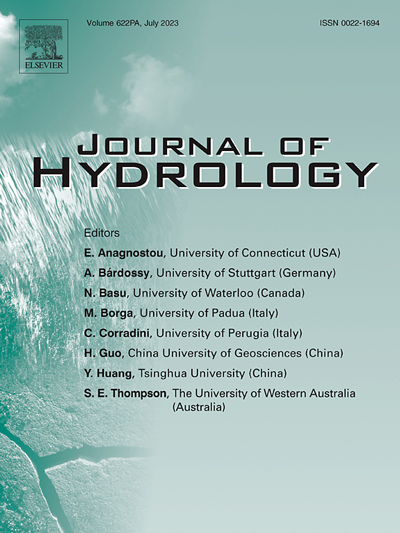
Flood-control reservoirs are common in the U.S. and several are located in highly agricultural regions of the Midwest. In this study, a mass balance of annual and seasonal NO3-N concentration and load reductions was calculated for Lake Red Rock, a large flood-control reservoir located on the Des Moines River downstream of the City of Des Moines, Iowa. […]
Plant community approach to establishing vegetation on DMPAs and CDFs

This technical note (TN) is the second in a series about using native plant communities to enhance Dredge Material Placement Areas (DMPAs) and Confined Disposal Facilities (CDFs). Project goals include the following: 1) introducing the dredging community to the benefits associated with native plant communities, and 2) demonstrating how targeted vegetation establishment can enhance DMPA […]
Patterns, drivers, and a predictive model of dam removal cost in the United States
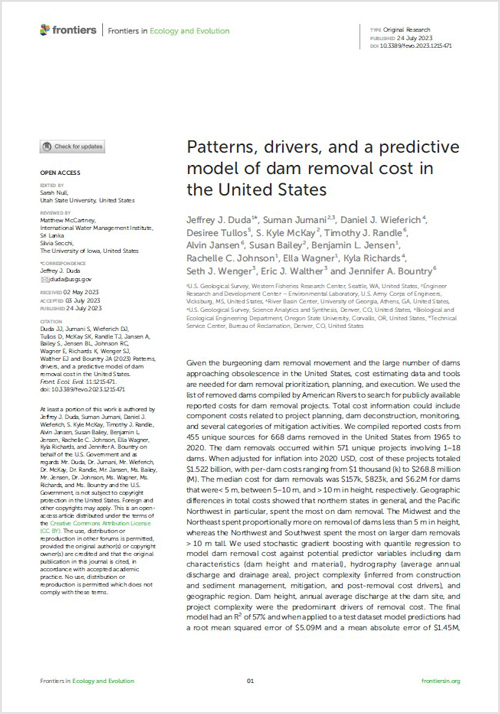
Given the burgeoning dam removal movement and the large number of dams approaching obsolescence in the United States, cost estimating data and tools are needed for dam removal prioritization, planning, and execution. We used the list of removed dams compiled by American Rivers to search for publicly available reported costs for dam removal projects. Total […]
Enhancing Benefits Evaluation for Water Resources Projects Towards a More Comprehensive Approach for Nature-Based Solutions: Case Study Analysis Results and Recommendations
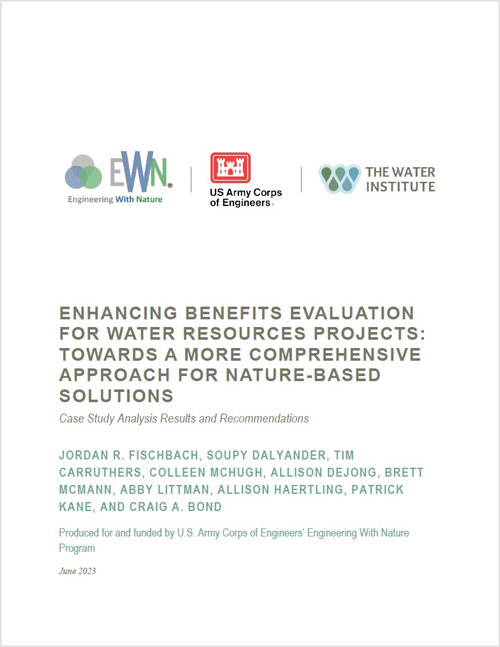
This document is the fourth and final report produced as part of this collaborative effort. Previous reports developed during this project describe the evolution of USACE evaluation approaches from prior eras of planning to the present day (Ehrenwerth et al., 2022), investigate where and how NBS were considered in planning studies from 2005–2020 (Windhoffer et […]
The potential for nature-based solutions to combat the freshwater biodiversity crisis

Enthusiasm for and investments in nature-based solutions (NBS) as sustainable strategies for climate adaptation and infrastructure development is building among governments, the scientific community, and engineering practitioners. This is particularly true for water security and water-related risks. In a freshwater context, NBS may provide much-needed “win-wins” for society and the environment that could benefit imperiled […]
Engineering With Nature: supporting mission resilience and infrastructure value at Department of Defense installations

This book illustrates some of the current challenges and hazards experienced by military installations, and the content highlights activities at seven military installations to achieve increased resilience through natural infrastructure.
Evaluation of cedar tree revetments for bank stabilization at the Locust Creek Conservation Area, Missouri : quantifying bank erosion volumes from preproject to postfailure
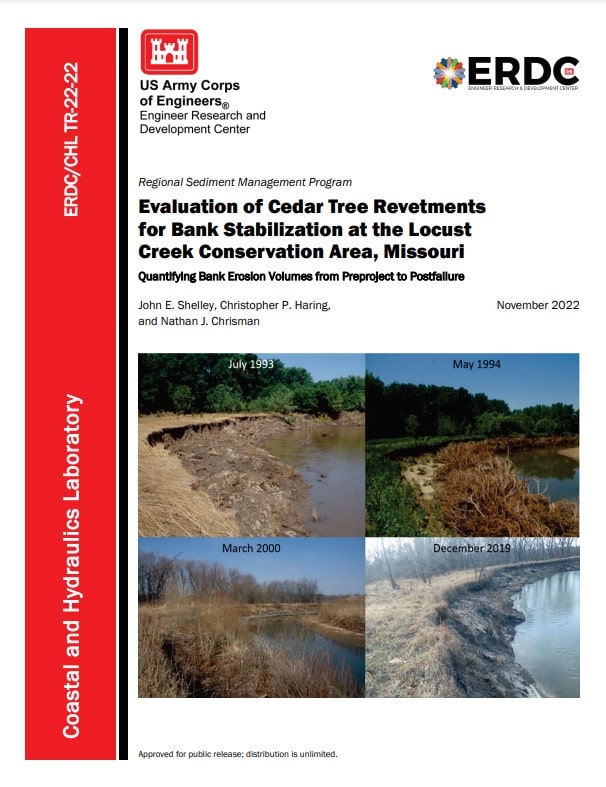
The US Army Corps of Engineers Regional Sediment Management (RSM) program funded research to assess the longevity and effectiveness of cedar tree revetments for sediment reduction. Between 1988 and 1997, the Missouri Department of Conservation (MDC) constructed multiple cedar tree revetments, plantings, and a grade-control structure at an experimental stream management area on Locust Creek […]
Benefits, Applications, and Opportunities of Natural Infrastructure: Proceedings of a Workshop—in Brief

Natural infrastructure is the practice of using naturally occurring aspects of the landscape and/or nature based solutions that use or imitate natural processes (e.g., wetlands, living shorelines, municipal green infrastructure) to support natural hazard resilience, climate change adaptation, and other benefits to people and ecosystems. Recognition of the multiple benefits of natural “green” infrastructure has […]
Swan Island resilience model development; Phase I: conceptual model
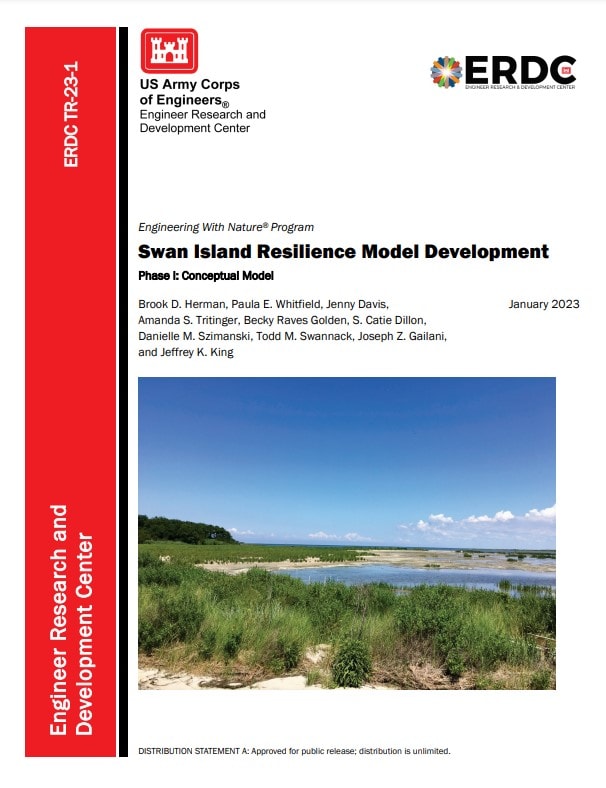
This report documents the development of an integrated hydrodynamic and ecological model to test assumptions about island resilience. Swan Island, a 25-acre island in Chesapeake Bay, Maryland, was used as a case study. An interagency, interdisciplinary team of scientists and engineers came together in a series of workshops to develop a simplified resilience model to […]
Enhancing Benefits Evaluation for Water Resources Projects Towards a More Comprehensive Approach for Nature-Based Solutions: Planning and Valuation Methods for Case Study Analysis
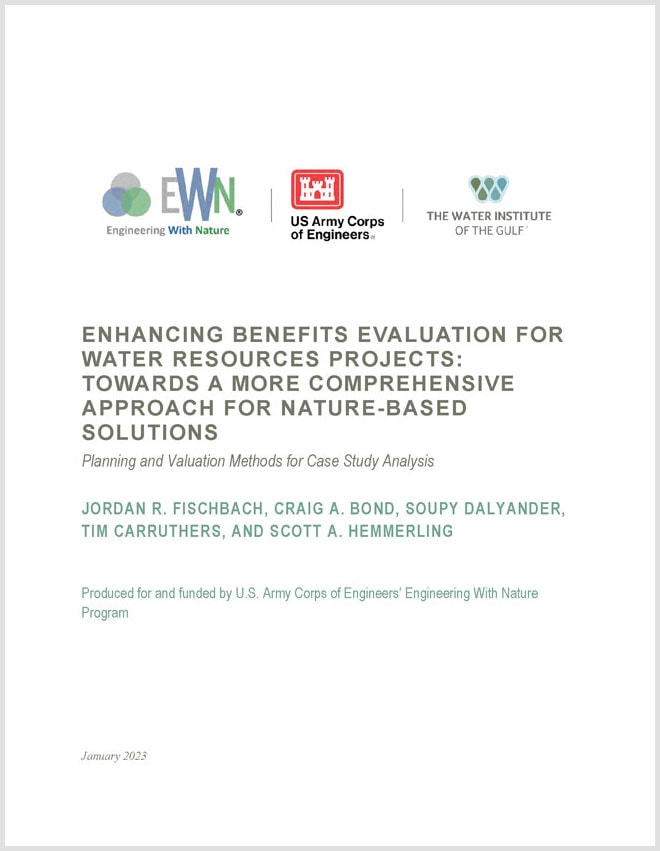
The third in a series, this report provides methodological guidance for the retrospective case study analysis and should be of interest to technical readers at USACE, other federal agencies, and interested stakeholders. The report describes recent and relevant decision analysis methods designed to inform decision makers when considering or trading off among multiple objectives when […]

